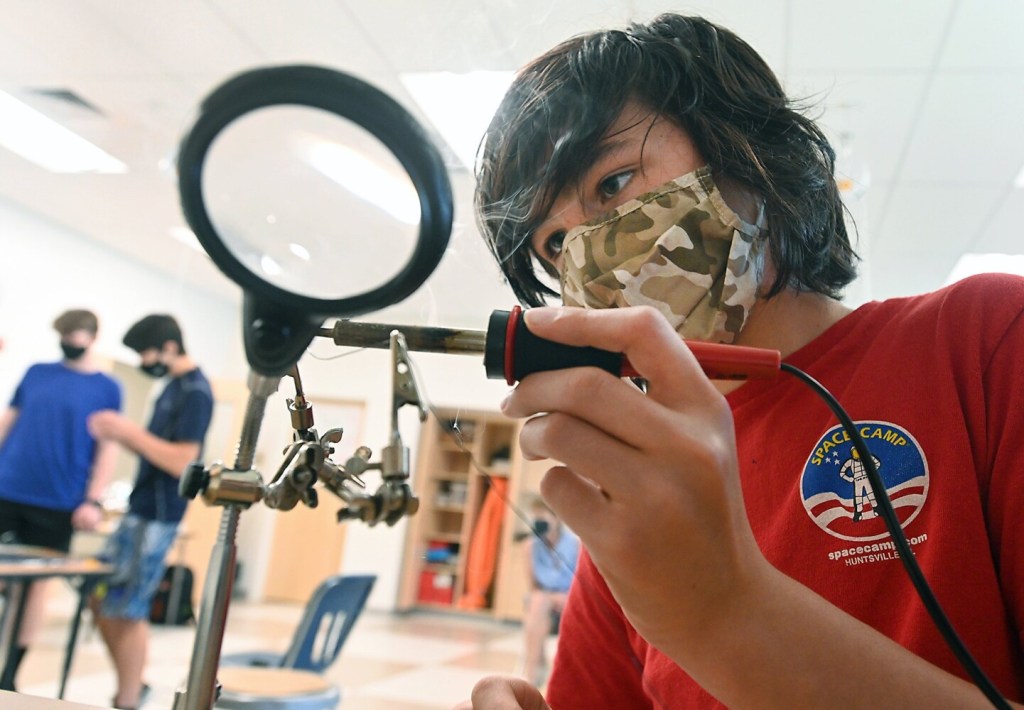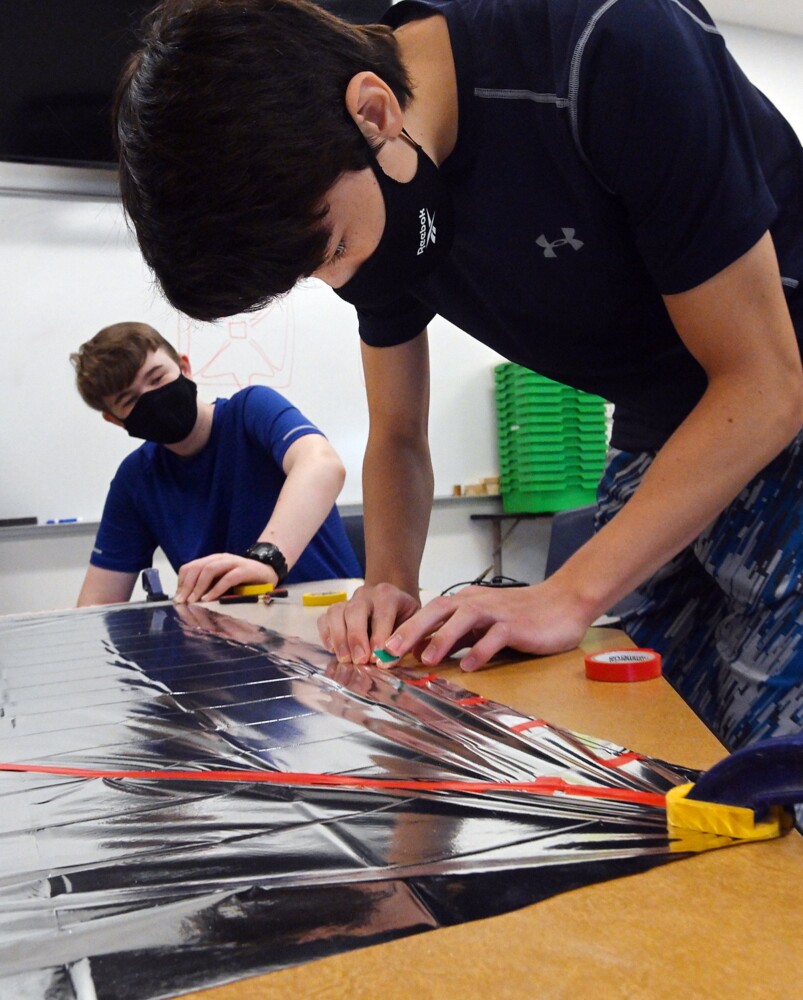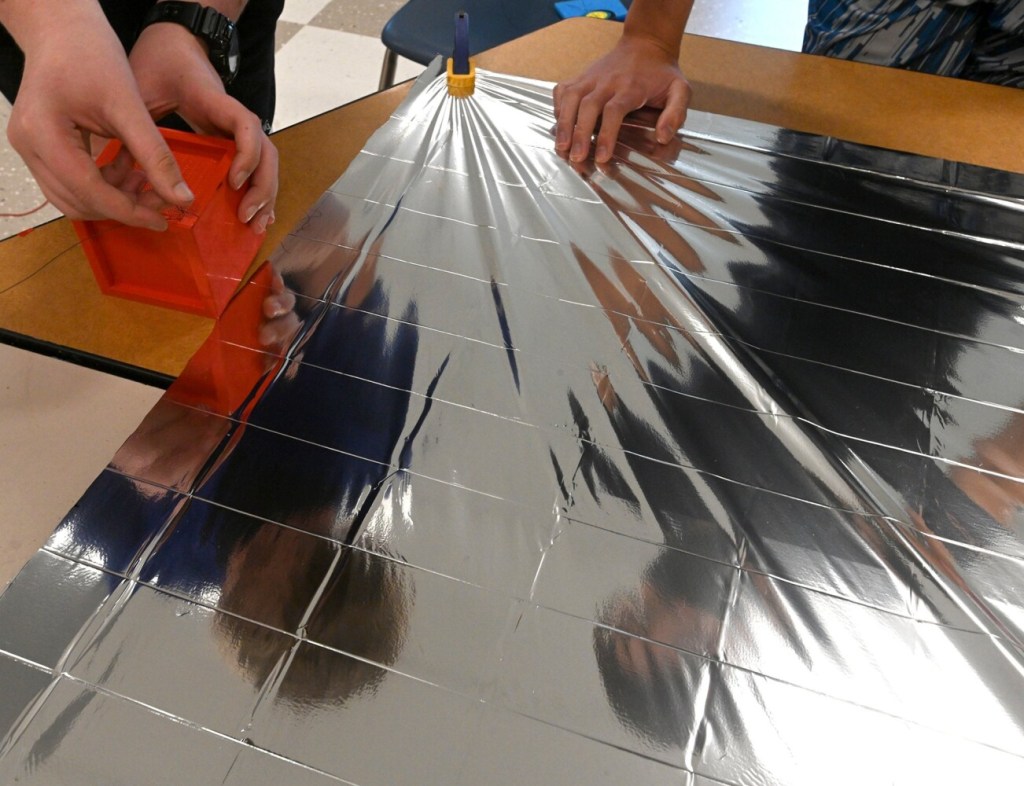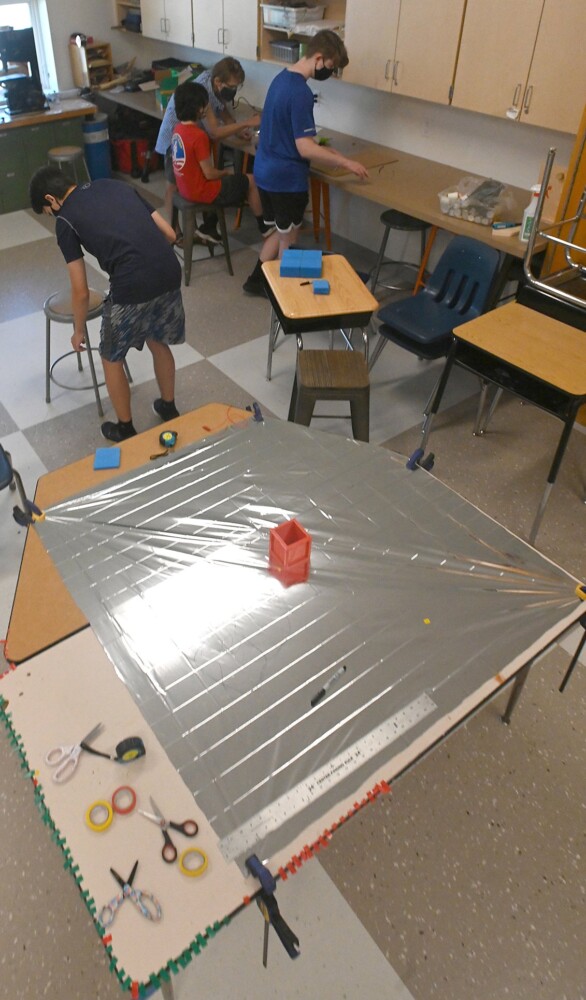WINSLOW — What looks like tinfoil Ryan Yang laid out on the floor in front of a Winslow Junior High School classroom is actually a technological and engineering achievement.
Five Winslow Public Schools students collaborated in designing and creating their cube satellite — Cubesat for short. The team was named one of four high school-level finalists in the University of Southern Maine’s inaugural Cubesat Design Competition.
School may be over for the year, but learning surely has not stopped.
“You can do anything you want with a satellite,” Yang said. “There’s so much to be created.”
Cubesats are a small research spacecraft weighing under 3 pounds. Winslow’s design focuses on what’s known as Solar Sail Deployment.
Their design, which has undergone constant adjustments throughout the planning process, uses muscle wire, also known as nitinol wire, to deploy a solar sail off of the small cube. As the students explain it, solar sails collect solar wind with its highly reflective material. The proposed use for the cube includes sailing to far off planets despite atmospheric pressures.

Winslow school cubesat students run fine electrical wire through a cube Wednesday before attaching the wire to the mylar satellite which reflects the students. When completed the cube will hold a micro processor. Rich Abrahamson/Morning Sentinel Buy this Photo
Winslow, along with the other finalists, Falmouth and Portland High Schools and Fryeburg Academy, had their designs 3D printed at USM to prepare for the upcoming launch.
“When you’re in space, things are really far apart, so you’ve got to get a lot of speed up,” Yang said. “The best way to do that is with light …”

Winslow school CubeSat students Ryan Yang, 17, right, and Nathan Hatt, 15, attach a fine electrical wire to a mylar satellite that students were building on Wednesday. Rich Abrahamson/Morning Sentinel Buy this Photo
The Winslow team is made up of three rising high school seniors (Yang, Zack St. Pierre, Steven Sloat), one rising sophomore (Nathan Hatt) and a rising eighth grader (Charles Byers). Ginny Brackett, Winslow’s Gifted and Talented Program advisor, took over the group after St. Pierre’s mother pitched the contest to the schools.
“It’s pretty amazing to watch it unfold,” Brackett said.
The Winslow cubesat design simulates light bouncing off of the satellite to send items between different parts of the solar system. The project uses different material and less power, making it easier to fold and move. Using the nitinol wire is a different method than other cubesats.
The group began meeting in April, drafting a proposal to send in for the contest. They were selected and began to work. The group met for 90 minutes twice weekly during school, and since school ended, they’ve met for three hours a day each weekday. All of this has been on their own time.
Byers, the eighth grader, said he’s learned a lot about electricity. Hatt said he’s not sure if it’s going to work, but it’s been an exciting and interesting project. They also credit USM with supplying not only materials, but support throughout the building process.
Questions were answered quickly, and the Winslow team never felt isolated or out on an island.
Winslow will see its cubesat launched Saturday morning on a University of Maine high-altitude balloon either at Pineland Farms in New Gloucester or in Farmington, which is to be determined. The Winslow team will consider the project a success as long as it gets up in the air and the sail folds. A camera will be attached to the top, so when it’s retrieved, the Winslow group hopes they can follow the trajectory.
“We have definitely done a lot of redesign and rebuilding,” Brackett said. “It gives (students) a real idea of what it takes to do a project like this.”
The five students and instructor said Wednesday morning that they can’t quite put a number on the total hours they’ve worked, but they can agree on a general number.
“A lot,” they said in unison.
Send questions/comments to the editors.







